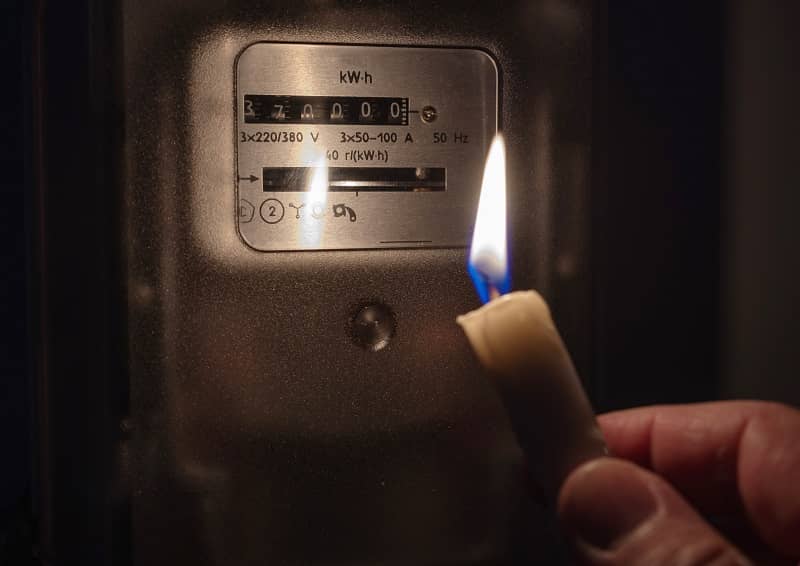Summary: Woody biomass opportunities abound in rural southern Oregon. With more than 4.25 million acres of timberland that would benefit from hazardous fuel reduction, rural communities also could prosper from the development of a significant biomass industry.
Striving to make Oregon a leader in renewable energy, the Oregon legislature in 2007 passed the Oregon Renewable Energy Act, establishing that 25% of electricity generation must come from renewable sources by 2025. Oregon already had significant hydropower infrastructure. But to reach these new renewable energy goals, steps have been taken to institute bio-fuel standards, support investments in solar and wind energy, and invest in research on wave energy. However, one of the greatest opportunities to meet multiple energy and natural resource objectives lies with woody biomass energy. Woody biomass can restore forest health, improve fire resilience and wildlife habitat, revitalize rural economies, and provide a renewable energy source.
“Woody biomass” is the material from trees and woody plants that is the byproduct of forest management, ecosystem management, or hazardous fuel reduction treatment. Oregon has huge supplies of woody biomass materials, according to the Fuel Treatment Evaluator Model used by the U.S. Forest Service. This model shows that more than twenty eastern and southern Oregon counties have a significant supply of biomass materials. (Western Oregon’s potential is in a subsequent analysis.)
More than 4.25 million acres of public and privately-owned timberlands are eligible for thinning to improve forest health and reduce fire risks in eastern and southern Oregon alone, making Oregon a potential world leader in woody biomass energy. (None of these 4.25 million acres include designated wilderness, roadless areas, or other areas where harvest is excluded.) These areas are estimated to have 20 million bone-dry tons (BDT) of renewable biomass available, which could be established on a sustainable twenty-year cycle of one million BDT per year. This potentially could generate 150 megawatts (MW) of electricity a year, equating to 150,000 homes powered by continuous renewable energy. Although this energy is not considered cheap, it is economically viable when coupled with the use of integrated stand management, meaning that some merchantable timber is also harvested to be used for wood products. Using this technique, the electricity cost could be at about 8.1 cents per kilowatt-hour, compared to current average generating costs of 7.54 cents in Oregon and the U.S. average of 10.24 cents.
Considered carbon neutral, woody biomass energy production provides several environmental advantages. The first obvious advantage is forest health. The use of biomass from slash reduction and the thinnings on overgrown or bug-invested stands of forest are imperative to lower the risk of catastrophic forest fires that burn hotter and larger than normal. Habitat diversity would be improved with the use of integrated stand management, which creates different ages of tree stands and canopies for a variety of species to thrive. Integrated stand management also would help achieve the best economics for biomass energy generation by allowing some merchantable timber to be harvested for wood products.
Every new opportunity has obstacles to overcome, and woody biomass is no exception. Of the aforementioned 4.25 million acres, more than 71% of it is publicly owned. This brings up questions of supply reliability and cost, as well as time delays. Traditional timber sale contracts with public agencies are extremely limited by political and personnel constraints. They can be time-consuming, due to the detailed environmental review required in the National Environmental Policy Act process and to meet Endangered Species Act mandates. Litigation by the environmental community can delay implementation of the timber sale for years. Some agencies are turning to “stewardship contracts,” which only allow for small amounts of timber to be harvested. (However, it should be noted that county governments do not generally receive any revenues from stewardship contracts, which they do receive from timber sales if the timber was part of the long-standing agreement to share revenues generated from Oregon and California railroad grant lands.)
Another obstacle is the lack of a modern electrical transmission infrastructure. Most biomass is currently being used in offsite plants for electric generation. To be competitive in the Northwest’s renewable energy portfolio, it is economically imperative that materials be relatively close to the biomass facility (preferably within 100 miles). Due to the plant location needing proximity to the resource, it is imperative to improve access to the electric power grid and transmission lines, so that the power generated can be transmitted to larger markets.
The stimulation of rural economies, which are being hardest hit in this economic recession, is the true opportunity with biomass energy. Living-wage jobs are vital in communities that have suffered from economic hardship long before the current recession. Communities built around renewable natural resources are incredibly innovative and resilient and should be given the opportunity to be competitive and to thrive again. Woody biomass is one stepping-stone in a long and winding path to both rural prosperity and a renewable energy portfolio that Oregon can be proud of.
This Commentary is first in a series on the potential of the woody biomass industry for rural Oregon. For more information about responsible, innovative use of rural lands, timber issues, and the implications of Oregon agricultural and environmental policies on rural Oregon, visit https://cascadepolicy.org/rural-oregon-freedom-project/.











